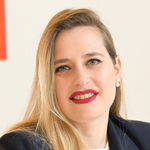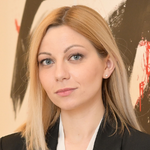The history of intellectual property is a history of technological evolution. While it is true that over the centuries the technological development has constantly raised challenges to the traditional system of protection of patents, trademarks, copyrights, and trade secrets, it is also true that innovation in processes and mechanisms of information exchange has introduced new digital infrastructures that are, in turn, leading to real economic and social upheaval.
Today, the call for an evolution in the intellectual property system is most apparent in the area of copyright management. Even in the midst of the digital age, copyright seeks to retain its original socioeconomic function, namely that of protecting authors and their creativity, through the provision of moral and economic rights, as they create new works and make them available to the public. In the field of artistic works in particular, technologies such as artificial intelligence and blockchain have now taken the stage, bringing with them a number of compelling legal questions. How to control the spread of artworks “in the age of [endless] mechanical reproduction”? How to ensure protection of authors’ rights? But most importantly, who is the author?
Artificial intelligence (“AI”) is a wide-ranging branch of computer science concerned with building smart machines capable of performing tasks that typically require human intelligence. AI is an interdisciplinary science with multiple approaches, but advancements in machine learning and deep learning are creating a paradigm shift in virtually every sector of the tech industry.
To clarify, “machine learning” is a subset of AI that gives systems the ability to learn and optimize processes without having to be programmed constantly. Simply put, machine learning uses data, statistics, and trial and error to “learn” a specific task without ever being specifically coded for the task. “Deep learning” (sometimes known as deep structured learning) is a subset of machine learning, where machines employ artificial neural networks to process information. Inspired by biological nodes in the human body, deep learning helps computers recognize and process images and speech quickly. Computers then “learn” what those images and sounds represent and build enormous databases of stored knowledge for future tasks. In essence, deep learning enables computers to do what humans do naturally—learn by immersion and example.
On the other hand, blockchain is a specific kind of distributed ledger technology (“DLT”), a decentralized peer-to-peer data storage system where participating computers (known as nodes) hold and maintain identical copies of the ledger. Data integrity is achieved through public-private key cryptography, so that an individual node cannot tamper with the information recorded in the ledger by rewriting the transaction. In blockchains, data is built up in a continuously expanding list of records (blocks), where each new block of data verifies the content of the previous block through mathematical-cryptographic functions. This ensures that all earlier blocks in the chain are immutable, i.e., tamper-proof. Blockchain is best known as the technology underlying Bitcoin, but it has been integrated into many other transaction and asset types; its programmability allows for the creation of smart contracts based on Ethereum.
As typically occurs when the law meets innovation, technologies like AI and blockchain have raised new legal challenges that still need to be resolved by legislators and judges. Though these topics are changing rapidly, below we provide a quick overview of the state of the art as it stands as of this writing.
- AI and copyright(able?) artworks
Today’s AI systems are creative, unpredictable, independent, autonomous, rational, evolving, capable of data collection, communicative, efficient, and accurate and have free choice among alternatives. Moreover, they are similar to humans and can autonomously generate creative works. Going a step further, AI has become a part of our daily lives, and “algorithmic creativity” has been in the spotlight recently.
There is an almost endless choice of examples, but we will mention just a few. In 2016, the tech giant Microsoft and the bank group ING did something incredible. Nearly 400 years after the death of famed Dutch painter Rembrandt, a “new Rembrandt”—known as “The Next Rembrandt”—was created. The project was to digitize the artist’s painting method; once a program “learned” the style of the painter, it would create a new, creative, independent, and original work of art that would be a genuine Rembrandt. To ensure success, AI experts gathered all 346 existent Rembrandt paintings. The next task was to develop software that could “understand” Rembrandt, based on his use of geometry, composition, and painting materials. The result was that an AI machine (“The Next Rembrandt”) painted brand-new, heretofore unseen paintings exactly as Rembrandt would have—or at least how he could have been expected to.
Some years later, Christie’s in New York auctioned an AI-created artwork titled “Portrait of Edmond Belamy” for USD 432,000. An AI algorithm created by a Paris-based art collective called “Obvious” was fed a dataset of 15,000 portraits painted from the fourteenth to twentieth centuries to produce the artwork. The AI algorithm was “trained” by the artwork of previous artists and composed a new work based on information from its dataset.
As these and numerous other examples show, machines can generate output that seems to comply with the prerequisites for copyright protection (essentially, creativity and novelty). The idea of acknowledging (and to some degree the need to acknowledge) such achievements and regulating the results by granting this new type of work legal protection has developed alongside this new form of art.
The work of Obvious and the Next Rembrandt project is part of a new wave of AI-generated art that appeared in the last few years. Before that, artists using computers to create artworks had to write detailed code that specified the rules for their desired aesthetics. In contrast, what characterizes this new wave is that the algorithms are set up by artists to “learn” aesthetics by looking at many images (chosen by the artist-programmer) using machine-learning technology. It is the algorithm alone that then generates new images following the aesthetic it has learned.
Here we come to the pivotal point: Can we consider such AI-created works copyrightable? If so, who should be considered the author (i.e., can the machine itself be considered the author of the work)?
The core elements of copyright law—namely the concepts of authorship, creativity, and moral rights, as well as copyright’s history and incentives—are deeply rooted in an anthropocentric (although not necessarily author-centric) world. This long-debated problem of whether a non-human subject can be the author of an intellectual work was first addressed by the Ninth Circuit Court of Appeals in the United States.[1] The case concerned the famous “Naruto” portrait, a photograph materially taken by a macaque using a camera owned by photographer David Slater, who purposely left the camera with the animal. The camera was left unattended to allow spontaneous activities by the group of monkeys that the artist was observing in 2011. On one hand, the court ruled that the photographer was not the owner of the photograph. On the other hand, the judges also stated that “[t]he Copyright Act does not expressly authorize animals to file copyright infringement suits under the statute […] Naruto lacks statutory standing.” By the reasoning of the court, only a human can be considered an author under American copyright law, and the same rationale might apply to works generated by AI. This approach is also confirmed by the U.S. Copyright Office’s Compendium of U.S. Copyright Office Practices[2] (Section 306), which states: “Because copyright law is limited to ‘original intellectual conceptions of the author,’ the Office will refuse to register a claim if it determines that a human being did not create the work.”
In the EU, copyright law generally requires human authorship (which copyright usually follows). Nevertheless, a recent report[3] prepared for the European Commission concedes that where the creative role of human beings is evident at various stages of the creative process (i.e., following the CJEU reasoning in the Painer[4] case, conception, execution, and redaction) AI production could most likely enjoy copyright protection. On the other hand, whenever it is difficult or even impossible to identify the necessary underlying creative choices, copyright protection will be less likely. That said, authorship will not be granted to the AI itself but—meeting the “human” requirement—to the person who provided the artistic and creative direction for the algorithm to work (usually the user).
However, the originality standard has been subject to limited harmonization in Europe, since EU law generally provides that software, databases, and photographs enjoy copyright protection only when they are their “author’s own intellectual creation.” For example, in Italy, there is no clear legal definition of an author. However, Article 6 of the Italian Copyright Law suggests that being an author is an exclusively human trait, as it provides that “the original entitlement for the acquisition of copyright consists of the creation of the work, as a particular expression of intellectual work.”
Irish and English copyright law, on the other hand, take a completely different approach and lend themselves to enabling copyright protection for AI-generated artwork as well. For example, Section 178 of the English Copyright, Designs and Patents Act protects computer-generated works, even those that do not have a human creator and where the creative role of human beings is missing. In those circumstances, the law designates the author of such a work as “the person by whom the arrangements necessary for the creation of the work are undertaken.” However, the UK Intellectual Property Office itself declared that this approach does not mesh well with the European and other modern approaches to originality, where creativity and authorship go hand-in-hand.
It appears, however, that a clear and consistent legal framework regulating authorship and copyright of AI works will not be a reality in the short run. Meanwhile, should the recent EU approach be followed in the future, current EU copyright rules could prove sufficiently flexible to deal with the challenges posed by AI-assisted output and copyright protection could be provided to AI products when sufficient creative human choices are involved. Following this approach, works such as the “Portrait of Edmond Belamy” and the work of “The Next Rembrandt” could be granted copyright protection under EU law. However, authorship status will be granted to the person or persons who creatively contributed to the output (i.e., determined the paintings or images to feed into the algorithm, set the goal(s) for the AI, chose the artistic style to follow/copy, and so on).
- Blockchain and NFTs: The rise of crypto art
The wide distribution of derivative works, a natural result of the unlimited replicability of works in the digital space, has led to a radical change in the way intellectual property is conceived and managed, even beyond the use of advanced technologies such as AI. Traditional works of art such as paintings and sculptures are valued due to their uniqueness, which in turns creates scarcity. In contrast, digital files (i.e., digital art) can be easily and infinitely reproduced. With the Internet and online sharing platforms, content suddenly becomes ubiquitous and, in practice, completely out of the control of owners of intellectual property rights. This generates a general situation of legal uncertainty, as recently observed in the Tom Kabinet case,[5] where the CJEU found itself having to perform a difficult balancing act between copyright and the free movement of goods. The exercise proved particularly complex in the context of products such as books; this category was significantly disrupted by digitization and the rise of their dematerialized counterparts (e-books), while until a few years ago those same goods were conceivable only in their paper format.
The scenario analyzed by the CJEU is just one of the many examples that tested the need to recreate the uniqueness of copyrightable works in the digital environment. In this context, the blockchain has been identified as a potential solution to artificially introduce a sort of “digital scarcity” by recording access and controlling the distribution of certified copies of digital works in the ledger. This is precisely where the term non-fungible tokens (NFT) comes in. NFTs have been a hot topic of conversation in recent months.
An NFT is a digital asset whose individuality and ownership can be proven and verified using distributed ledger technology, such as blockchain. NFTs can then be used to “tokenize” a digital file by producing a digital certificate of ownership, stored in the distributed ledger, that subsequently can be sold and transferred. This allows the creator to make the digital file unique and attribute the element of scarcity to the digital file, thus creating value. Additionally, a creator can present proof of title to a unique digital version of an underlying physical asset. These systems, as mentioned above, all have in common the recording of information relating to the origin and ownership of the rights being transferred, and they have spread quickly through all sectors of digital entertainment, including music, audiovisual content, and the art world.
To understand the impact of NFTs on art, just look at the events of March 11, 2021, when the prestigious auction house Christie’s sold a work of art called Everydays: The First 5000 Days by creator Mike Winkelmann (known professionally as “Beeple”) for more than USD 69,000. “Beeple” crafted a composite of 5,000 daily drawings that anyone can view online for free, while the buyer of the NFT will own the only built-in authentication, which serves as proof of ownership.
In the art world, however, the spread of blockchain has led to the flourishing of multiple initiatives not entirely related to NFTs. Many of these projects, such as Artchain.world[6] and the Italian SpeakART,[7] allow the origin and authenticity of the work of art or its author to be traced, offering a platform for monitoring various ownership events and any movement involving artistic goods. Others, such as the R.A.R.E. network[8] and Wunder,[9] are intended to provide a new participatory and collaborative dimension in support of the art world. These initiatives offer art galleries, collectors, and artists themselves the chance to obtain funding by selling tokens that are secured by the works included in a collection. Still others, such as Maecenas,[10] grant access to the art market even to amateurs with little money to invest. They can buy single fractional shares of tokenized works whose value represents an investment destined (they hope) to grow over time.
Obviously, all these applications pose new and peculiar legal challenges; for example they imply the performance of forms of Utility Token Offering (UTO) or Security Token Offering (STO), with the consequent issue of financial tokens. Again, this raises a number of legal questions relating to the creation, sale, and exchange of new tokens, as well as to aspects concerning notarization and succession. Moreover, it remains to be seen whether these forms of incentive toward greater interest in art and culture can be considered forms of promotion or sale of financial products. On the other hand, from a copyright law perspective, it remains unclear which rights to the “digital original” are transferred with the purchase of NFTs and whether they should be standard or can be negotiated, perhaps through the use of a “smart contract.” On top of that, most jurisdictions do not yet have legislation or regulations specifically applicable to blockchain and NFTs, but a host of existing regulations may still apply depending on a token’s characteristics and features and the activities performed in relation to the token.
- Conclusion
It is currently impossible to define either a trajectory or a timeline for upcoming developments in AI and blockchain in the art world. Beyond the current configuration of the market in the near future, one would hope that all players in the sector, both public and private, understand the largely unexplored potential of new technology and push legislators and institutions to adopt effective initiatives to facilitate its implementation. The future of intellectual property—economically, socially, and culturally speaking—largely depends on its ability to stay abreast of digital evolution. From a legal viewpoint, the shift from IP to smart IP represents not only a new and interesting field for academic investigation, but also and above all the possibility to participate actively in defining (and helping stakeholders navigate) the digital landscape of the future.
[1] Naruto v. Slater, No. 16-15469 (9th Cir. 2018).
[2] U.S. Copyright Office, https://www.copyright.gov/comp3/chap300/ch300-copyrightable-authorship.pdf.
[3] European Commission, https://ec.europa.eu/digital-single-market/en/news/trends-and-developments-artificial-intelligence-challenges-intellectual-property-rights-0.
[4] CJEU, December 1, 2011, C-145/10, Eva-Maria Painer v Standard VerlagsGmbH and Others.
[5] CJEU, December 19, 2019, C-263/18, Nederlands Uitgeversverbond et al. c. Tom Kabinet.
[6] Artchain, https://www.artchain.world/.
[7] SpeakART, https://www.speakart.it/en/blockchain-in-simple-words/.
[8] RAREart, https://www.rareart.io/.
[9] Wunder Art, https://wunder.art/.
[10] Maecenas, https://www.maecenas.co/whats-maecenas/.




